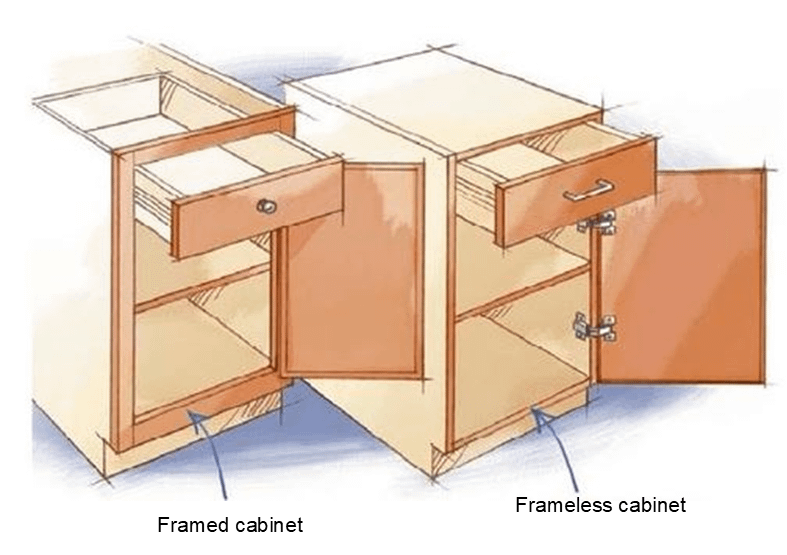Framed and frameless cabinets are two common types of kitchen and bathroom cabinets, and they have distinct differences in their construction and appearance.
Framed Cabinets:
- Construction: Framed cabinets have a traditional construction with a face frame made of solid wood. The face frame is a structural component that provides stability to the cabinet and serves as a frame around the cabinet doors and drawers.
- Door Mounting: The cabinet doors are attached to the face frame using hinges. The hinges are visible when the doors are closed, and they contribute to the overall design of the cabinet.
- Space Utilization: Framed cabinets may have slightly narrower openings compared to frameless cabinets because of the face frame, which reduces the usable space inside the cabinet.
- Aesthetics: The face frame of framed cabinets creates a more traditional and classic look, and the frame adds depth and dimension to the cabinet’s appearance.
- Durability: The face frame provides extra rigidity and strength to the cabinet, making framed cabinets highly durable and suitable for heavy-duty use.
Frameless Cabinets:
- Construction: Frameless cabinets, also known as European-style cabinets, lack a face frame. Instead, the cabinet box itself forms the structure, and the doors and drawers are mounted directly to the cabinet box.
- Door Mounting: Frameless cabinets use concealed hinges to attach the doors directly to the cabinet box. When the doors are closed, the hinges are not visible, giving the cabinets a sleek and modern appearance.
- Space Utilization: Frameless cabinets offer more storage space than framed cabinets because they don’t have a face frame, allowing for wider cabinet openings and maximizing interior space utilization.
- Aesthetics: Frameless cabinets have a contemporary and streamlined look, often preferred for modern and minimalist design styles.
- Durability: While frameless cabinets lack the additional strength provided by a face frame, they are still sturdy and durable due to their solid construction and high-quality materials.
Both framed and frameless cabinets have their advantages and suit different design preferences and functional needs. Framed cabinets offer a classic look and added stability, while frameless cabinets provide a more modern and spacious interior. When choosing between the two, consider your design style, storage requirements, and overall aesthetic preferences to find the perfect fit for your space.


